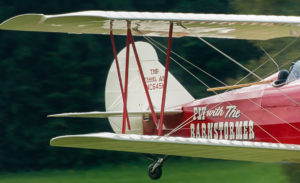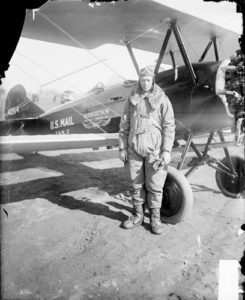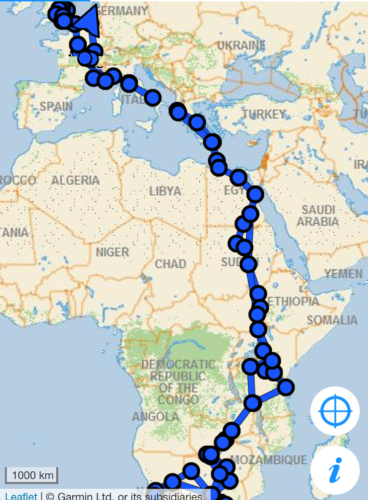I’m always puzzled by the awe with which so many people — some of them pilots themselves — regard those of us who regularly fly to other continents.
From Day One, there was clearly nothing superhuman to me about the feat, especially given the incredible capability and redundancy of the equipment we operate. Modern business jets are as well equipped as any airliner. Sometimes better, in fact. There are backups for everything, and then backups for the backups, and procedures for dealing with even those systems, should they go south. All this on an aircraft where a failure of any consequential item is already extraordinarily rare.
As I’ve noted previously, the most challenging part of the job isn’t the flying. Rather, it’s keeping up with the varied rules and regulations for each country’s airspace. The customs and immigration procedures. The layers and layers of administrative tasks. The language barriers, time zone changes, and so on. The actual flying becomes the predictable, straightforward aspect of it all. And I’ve got absolutely no problem with that. It ought to be boring, because that’s the level of safety expected for modern day commercial air travel.
So that’s the long way of saying I wouldn’t be too impressed by “extended range” flying. If you want impressive, let me tell you about a long-time friend and student of mine. We got to know one another when he appeared on my schedule for a primary aerobatic course, where he mastered loops, rolls, spins, and loop/roll combinations like the Immelmann, split S, and barrel roll.

I also taught him to fly tailwheel aircraft, and in retrospect it’s one of the most significant endorsements I’ve ever provided. Later, I was his CFI during commercial certificate training. The following year he bought a beautifully restored 1929 Travel Air 4000 biplane, and I provided some instruction in that as well.
If you’re not familiar with the Travel Air, it’s a link to the earliest days of aviation. I’ve seen the original Bill of Sale for the aircraft: it was signed by Walter Beech. Yeah, THAT Walter Beech. The lower surface of the wing has a concave curve to it, as many early airfoil designs did. And although the original Wright J-6 powerplant since has been replaced by the more ubiquitous Continental W670 radial, it’s still a 90 year old tube-and-fabric, open cockpit antique. On a good day you’ll get 85 mph out of in cruise.
That’s to say the airplane isn’t much good for going anywhere. Or at least, that’s what I always thought. As far as I know, my friend never ventured too far away with the Travel Air… until one day when he called an asked a few questions about international procedures, equipment requirements for Europe, VFR airspace and charts for the Continent. I assumed he was going to be taking some lessons at a local flight school over there.

Nope. He was having his Travel Air shipped to England so he could fly it VFR across the Channel and the rest of Europe toward Greece. Then from Crete, across the Mediterranean to Egypt, and down the full length of the African continent to Cape Town, South Africa.
I’ll be honest, my first thought was, “Is this a joke?”. My second was, “Are you crazy?”. And my third: “How are you going to get approval for any of this?”. My jet will make a trip like that, but it comes with a team of professionals to handle the permits, fees, rules, permissions, and mounds of paperwork that always accompany such a journey. I wondered what a Flight Risk Analysis app would say about a trip like this…
On further investigation, he was joining a group of intrepid barnstormers who were recreating the early 20th century mail routes which ran the length of Africa. They called it the Vintage Air Rally. As I remember, my friend described it to me as “a little adventure”. Boy, was it ever.
You’ll see him and his aircraft in this video, which provides a small sense of what they experienced:
But it gets better. When the rally ended in Cape Town, the other pilots had their airplanes disassembled and shipped back home — “home” being places which were, for the most part, a lot closer to South Africa than southern California. My friend? He decided to fly back to England.
On his own.
Here’s a map he sent me after reaching the U.K. I stared at that image for a long time. Imagine the weather, the unimproved strips, the mechanical issues, and so on that he had experienced. I know at least one aircraft on the Vintage Air Rally crashed.
My friend regaled me for an hour with stories about being detained for days after a bit of paperwork was not where it should have been. Another time he suffered a broken crankshaft in flight. After a safe landing, he had a new engine sourced, shipped, and installed by his mechanic (who flew all the way from California and arrived at the same time the engine did) within a day or two. He had encounters with IMC, extreme density altitudes, and winds we rarely see back home.
On the other hand, his tale also included moments like landing in the dirt of a remote village only to find the people there had never seen an airplane before and didn’t know what his machine was. Can you imagine giving a ride to a kid who has no concept of what an aircraft is, who has never seen even a photograph of one before?
The Air Rally participants received permission to make close fly-bys of normally restricted wonders like the Egyptian pyramids and Victoria Falls. And just by virtue of the low altitude and VFR flying, they saw things from the air I’ll never see in my airplane. I love this story because it helps explain the wonder of light general aviation to people whose concept of flying is limited to utilitarian aluminum tubes and airline terminals.
By the time he had completed the trip and was ready to crate his biplane, if memory serves he had flown something like 15,000 miles across some of the most challenging and inspiring terrain on Earth. To me, this is the kind of adventure I imagine when the word “awe” is uttered. Even the Earthrounders aren’t as impressive, because while they have circumnavigated the globe, they’re usually flying much more capable equipment and operate out of established airports. The Vintage Air Rally was barnstorming writ large, and I doubt anything will top it in the flying careers of those who participated.
I told my friend that there are pilots, and then there are aviators. The transformative experience of flying across Africa in that open cockpit antique qualified him as the latter. They were things which could not be duplicated or taught. In today’s world of highly equipped, almost antiseptic aviation, perhaps that’s what made them so special.
As far as I was concerned, from now on, he should be teaching me. I dunno if that comment played a part in what comes next, but he’s now working on his flight instructor certificate.


This is so cool. Putting that one on the bucket list for sure!!
Ditto. Suddenly flying lines underneath the LAX localizer doesn’t seem quite so exciting anymore. 🙂
I really don’t have a question on flying. I have a couple of questions on something else. 1) Did you grow up in Colorado? 2) did you play Amateur hockey? 3) Did you know Clara Anne Mosley or maybe she was going by Kaiser
Thank You,
Lisa Mosley Berry
You’re probably not old enough!! ðŸ˜âœŒï¸â˜®ï¸
Nope, sorry—not me.
What an epic and authentic adventure! This is terrifically inspiring.
Isn’t it, though? Part of my amazement comes from the fact that few people are adventurous enough to undertake something like this today. It seems to have been documented well enough that it can inspire others for a long time to come.
Yes! There are so many outlets for virtual adventure. I think we lose something if we substitute those for real personal experience — adventure. Kind of like knowing about something and knowing. Cheers!
Tell us more about this guy….how old, previous flying experience, back ground. Let’s do the flight in a bunch of Van’s RV’s!! Great story, Ron. Thank you. PS: last year i had 30 hours in gliders…..talk about a way to get the “feeling in the seat of your pants”. Sometimes now when i am doing T. & G’s at ksna, i can feel the little thermal that often develops on the 15deg. To crosswind over a road or parking lot. I was always frustrated when Chris Bebensee would say “you should feel it” when talking about skid or yaw and now by soaring, it is much easier. Every pilot should try soaring. Rod
Good questions, Rod! I don’t actually know how old he is. I’m guessing 50s? He’s owned a few different airplanes, from the Travel Air to a more modern six place turbocharged single engine. And he’s flown around the U.S. a fair bit, but nothing anywhere close to the scope or scale of the Vintage Air Rally. I’m not sure this is the kind of thing you can ever fully prepare for. In that sense perhaps it’s better to jump in not realizing the entirety of what you’ve signed on for, else you might never do it in the first place. Life is like that sometimes.
You may have met or at least seen him before. He’s been around SNA and the O.C. aviation scene for quite a while.
Gliders are outstanding training! Yes, we often tell students to feel the slips or skids, but over the years I’ve realized it’s easier said than done. You really have to relax your body and pay attention to which way the forces are pulling you. In a busy terminal environment, a certain sense of tunnel vision can creep in. One of the advantages of soaring is that it takes place in a more rural environment where many of the distractions are removed. Virtually no other traffic, no instruments, no radios, no noise. Not even a throttle! Just a stick and rudder pedals. Oh, and a yaw string. Amazing how much can be learned from a little piece of yarn taped to the canopy.
Now have two email….
Just. Wow.
That’s about all I was able to say when he was telling me about the trip!
pilot v aviator. Thats just about sums it up. What an inspirational story.
Glad you enjoyed it. My friend is probably not the kind of guy you’d think of as adventurous to an extreme degree. He’s not a BASE jumper or whatnot. In fact, he’s quite careful and safety minded, which is part of why I love his story: just about anyone can do it. Most of us just… don’t.
I have to say, I’m one of those people who think flying over oceans is always amazing.
We shouldn’t lose sight of the fact that travelling at 700mph and sipping coffee in your shirtsleeves just inches from air that’s both cold and thin enough to kill you is “quite” the human achievement…
That said, there are clearly different kinds of amazing, and flying the length of Africa twice in an open cockpit biplane is of another order. It’s always been one of the great challenges of long-distance aviation, and there’s no way doing it in this day and age would be any easier than doing it in 1930. Some different challenges perhaps, but hardly any fewer.
Your post couldn’t come at a better time either: In 2019, Australia (at least) will mark the Centenary of Ross and Keith Smith’s incredible flight from London to Melbourne. That’s right, 19,000 miles in an open, rag and stick WW1 bomber with virtually no ground support – not even airports in a lot of places – in 1919.
Mind you, no paperwork either, which is probably why it *only* took them 29 days! These days the same journey takes about 20 hours and, if you had a mind to, you could complain about it the whole way.
I’m sure a lot of people *do* complain about it the whole way. But you’re right, it’s an incredible technical achievement to be able to travel such distances in supreme safety and (relative) comfort. To say the environment at those altitudes is hostile would be an understatement. The complaints and taking it all for granted is just one of the many signs of success in humankind’s aerospace progress, I suppose.
London to Melbourne is nothing to sneeze at! That was, what, five years before the Douglas World Cruisers circumnavigated the globe for the first time? That fleet traveled something like 28,000 miles, but of course the resources of the U.S. Army were behind them. That’s not say say they were cheating… but it certainly didn’t hurt.
I look forward to learning about the Smith adventure via Airscape!
LOL! You’re right – the complaining is a sign of our absolute success. “Familiarity breeds contempt” feels appropriate.
I’m not sure how to cover the Smiths’ epic flight, given how much other coverage there will be, but I’ll do my best. It helps that I live in their home town. 🙂
I’m always amazed whenever I start the jet without breaking it….or rather not get caught. 😜